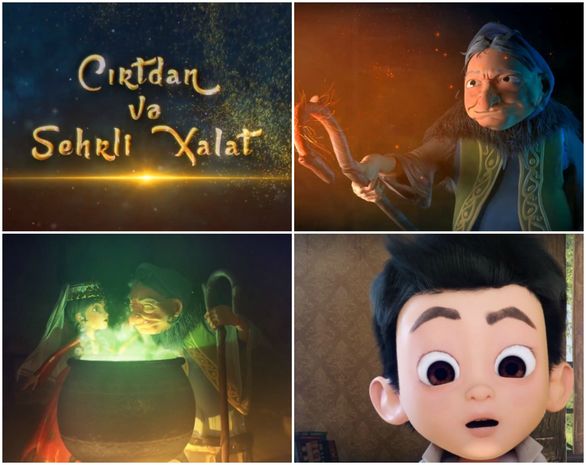A BRIEF HISTORY OF THE CREATION OF ANIMATED FILMS IN AZERBAIJAN
The desire to create an animated film in Azerbaijan and the realization of this wish belong to the 30s of the XX century. Studio "Azerbaijanfilm" made a special effort in this work and bought and brought the necessary technical equipment from Moscow.
During the filming of documentary films "Lokbatan" and "Oil Symphony" (director B.Pumpyansky) technical animation was used, and in the instructional film ” Cat " (painter Basov) the animation was used as a whole. The film was shown on all-union screens until 1938. This film served as an incentive for film studio workers, and a group of entrepreneurs also decided to create a cartoon. The theme of the cartoons was taken from folk tales.

A. Popov wrote the script "The Misery of Abbas" G. Egiazarov became the cameraman of the film, and E. Dikarev became the director. The paintings shown in the film belonged to G.Halygov, J.Zeynalov, M.Magomaev, and A.Mirzaev.
Shortly before the Great Patriotic War, the studio was preparing for the shooting of the second animated film "Sindbad is a sea traveler". It had to be a sound film. But, unfortunately, the work related to the beginning of the war was unfinished.
In the late 60s, conditions were created for the shooting of animated films at the film studio. A group of artists of 20 people was created for the shooting of cartoons, special courses were opened in the studio to learn the secrets of this art.
In 1968, the cartoon workshop was restored at the "Azerbaijanfilm" studio named after J.Jabbarli. Director A.Iskandarov paid special attention to the commissioning of the workshop and the training of personnel on animated films, as well as the production of animated films.
Finally, on February 1969, 28, the production of the cartoon of the same name on the motives of the folk tale “Jirtdan” was completed. The first film, shot after the restoration of the studio's animated films workshop, became "Jirtdan". The film was released on screens in 1969 and has been on the screens of our cinemas for a long time. Thus, the production of "Jirtdan" began the second period of the history of animated films in Azerbaijan.
In the 70s, the Department of animated films of the film studio produced more than 20 animated films. In 1971, based on the work of the same name by A.Shaig, the cartoon "The Fox goes on pilgrimage" (director N.Mamadov, B.Aliyev) was shot. This cartoon is one of the most interesting works both in terms of style and art. The puppet film "Chaggal oglu chaggal" (1972, director M.Rafiev) is the first and only full-length Azerbaijani cartoon.
In the 80s, 38 animated films were produced in the film studio.
Azerbaijani cartoons were not at the same level in terms of artistic quality. There were several reasons for this: the first was due to the training of personnel, professionalism, and the second was due to the lack of technical equipment, especially paints.
The socio-political processes taking place in the country at the end of the 80s, their impact on all spheres, including creative organizations, the search for ways related to the transition of “Azerbaijanfilm” to a new way of work gave impetus to independent activity of unions and departments under the film studio.
In April 1990, for the first time in the Soviet Union, Azerbaijani multiplicators switched to the lease form of the farm. The name of the multiplication shop was also changed, and "Azanfilm" was a Creative Production Association ("Azanfilm" — Azerbaijan animation films).
In the 90s, 19 animated films were shot under the brand name “Azanfilm”. In 1993, the II festival-competition of Azerbaijani films was held in Baku, for the best-animated film at this festival, director V.Talibov was awarded prizes and diplomas.
In 2018, for the first time in Azerbaijan, a local cartoon "Jirtdan and magical robe", produced by "Three Friends" animation company, was shot in 3D format for the development of children's intellect and mastering their native language rather than a foreign language. Eight characters were used in the animation. In order to characterize respect for values, the girl's dress, which tells that the cyclopes have come, was chosen in the national style.



